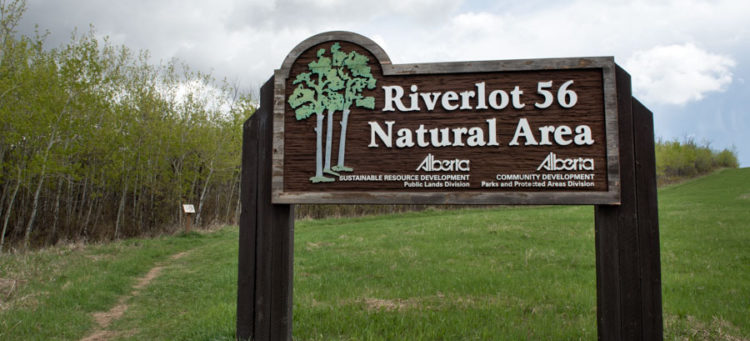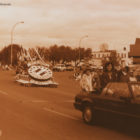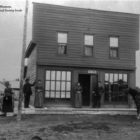
Then & Now
Riverlot 56
May, 2017
While walking the beautiful trails of Riverlot 56, many hikers wonder how it has managed to remain so pristine over the years, especially when the lands on all four sides have given way to farms, houses and other signs of human habitation. Well, wonder no more. Here’s a look at Riverlot 56, then and now.
1800s
Riverlot 56 began as one of the many land divisions used to section off St. Albert into ready-to-buy properties for immigrating farmers. While most of Alberta is sectioned off in a grid-like pattern, the Dominion Land Surveyors of 1871 were instructed to leave the lands around St. Albert alone in respect of the existing riverlot system of land division, which is based on the traditional French-Canadian style.
Though Riverlot 56, along with all the other lots that surrounded it, existed on paper within the town’s record office, the land itself remained unnoticed and vacant for decades. The primary purpose of land surveys at that time was not necessarily to sell the land quickly, but to allow governments to prove ownership of the land through land claims and classification.
1920s
By the early 1900s, the lots around St. Albert were being bought up by immigrating farmers, and Riverlot 56, too, caught the attention of a buyer. It was purchased by the Government of Canada in 1920 to be the future site of the Edmonton Indian Residential School, which was to become a Protestant counterpart to the Catholic Residential School that was already active in town.
The school was completed in 1924, and while it took up only a small portion of the riverlot (the land where Poundmaker Lodge can be found today), the federal government retained ownership of the entire property and left it largely untouched.
1960s
In 1965, the federal government sold the majority of the land to the Government of Alberta, retaining only the land around the Edmonton Indian Residential School, which would remain in operation for another three years. On this new land, the province had planned to build Alberta’s third university. Riverlot 56 would become its campus.
1970s
In 1971, Peter Lougheed’s Progressive Conservatives ended the 36-year dynasty of the Social Credit Party, and as the government changed hands, so too did the plans for a St. Albert university. Under the new leadership, the university was given to Athabasca, and once again, Riverlot 56 found itself without a development plan.
But even though Riverlot 56 remained undeveloped for over a century, it did not remain unused. For decades, the citizens of St. Albert had been making use of the wooded riverlot to hike, to ski and just to retreat into nature for a while. In 1973, many of these nature enthusiasts banded together to figure out a way that they could protect the land against future development plans and keep its natural beauty around for future generations to enjoy.
1980s
By 1980, the Riverlot 56 protection movement had gathered enough momentum that it officially formed its own group, the Riverlot 56 Natural Area Society. Their goal in those early years was to petition the government to make the lot into an officially recognized natural area, which would be protected by law.
Seven years later, in 1987, their efforts were rewarded when the Canadian Council on Ecological Areas granted Riverlot 56 its protected status and secured its future as a natural area.
Today
Since the 1980s, the trails of Riverlot 56 have gotten a little more worn, and the underbrush has grown a little thicker. But thanks to the efforts of the Riverlot 56 Natural Area Society, not much else has changed. It remains a haven for local bird watchers, hikers, skiers and nature lovers of all kinds. t8n
Fun Fact
Riverlot 56 has over 8 kilometres of trails within its borders. This expansive trail system is used by hikers in the summer and is fully groomed in the winter months for cross-country skiers to enjoy.
Did You Know?
At different times of the year, Riverlot 56 is home to deer, moose, coyotes, snowshoe hares, muskrats,
beavers and about 90 different species of birds.













